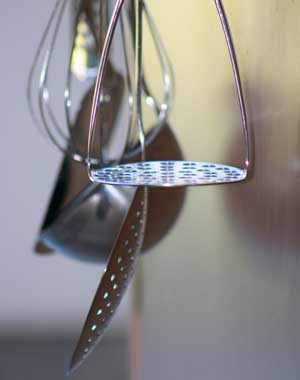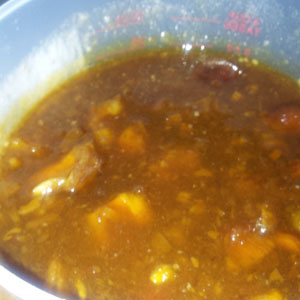 Contrary to popular belief, you dont need a cupboard full of electrical mixers, blenders, grinders or other gadgets to start you on your journey to having fun with cooking. They are nice to have but unless you use it all the time a gadget does not save time – it just takes up space.
Contrary to popular belief, you dont need a cupboard full of electrical mixers, blenders, grinders or other gadgets to start you on your journey to having fun with cooking. They are nice to have but unless you use it all the time a gadget does not save time – it just takes up space.
Below is a list of what I think should be in every kitchen, and it is what I advised my daughter when she moved into her first apartment.
Starting with the utensil drawer
- Vegetable Peeler
- Teflon spatula (commonly known as an egg lifter)
- Silicon scraper x 2
- Bamboo or Wooden spoons x3
- Metal tongs
- Ladle
- Slotted Spoon
- Large serving spoon
- Pastry brush
- Potato masher
- Balloon whisk
Moving onto the larger utensils
- Colander
- Cheese grater – these come in a bewildering range of sizes so choose a free standing grater for your first one and gradually add to this
- Large and small strainers (preferably with metal mesh)
- Good quality chopping boards – keep one separated for preparing fruit and vegetables a tip is to buy this in a different colour. Dont use glass boards- they ruin the knives’ edge
- Set of small stackable bowls for preparation
- At least 2 Mixing bowls – preferably glass or stainless steel; neither of which will react or absorb the flavours of the food you are preparing
- 8″ Chef’s knife (I prefer Wusthof Trident but that is another matter)
- 8 to 10″ Serrated Blade knife
- at least 2 paring knives – these come in handy for most small preparation
- Rolling pin
- Set of measuring cups and spoons
- Large pyrex measuring jug (dual measurments are great)
- Disposable storage containers (I use these because I dont fret when the food stains them and I have to throw them out)
Now for the Big Stuff
A good set of saucepans should include lids and at a minimum you need a small medium and large of the best quality you can afford. Skimping on this will cost money in burnt food if the bases are too thin.
Add to this at least one Deep dish 10″ teflon coated frying pan with lid. This can be used to cook an amazing variety of foods and casseroles.
Square sided Cannisters for your staples always come in handy, they stack in the cupboard and keep out critters and you can see at a glance what you need when doing a shopping list. Alternately stack all of the baking ingredients into a tub to keep out the moisture and critters.
Spices need to be stored away from direct sunlight to maintain their flavour, you can use another tub to store these.
For Baking I recommend the following basics
- Muffin pan
- 8″ round cake pan
- Teflon baking tray
- 8″ Loaf pan
- 2 x Baking sheets
- 2 x wire racks to cool the cooked food or rest pans on when out of oven
Dont forget that you can add to this as you discover the need or have the money to expand with more toys.
Article Copyright Colleen Loader 2013







